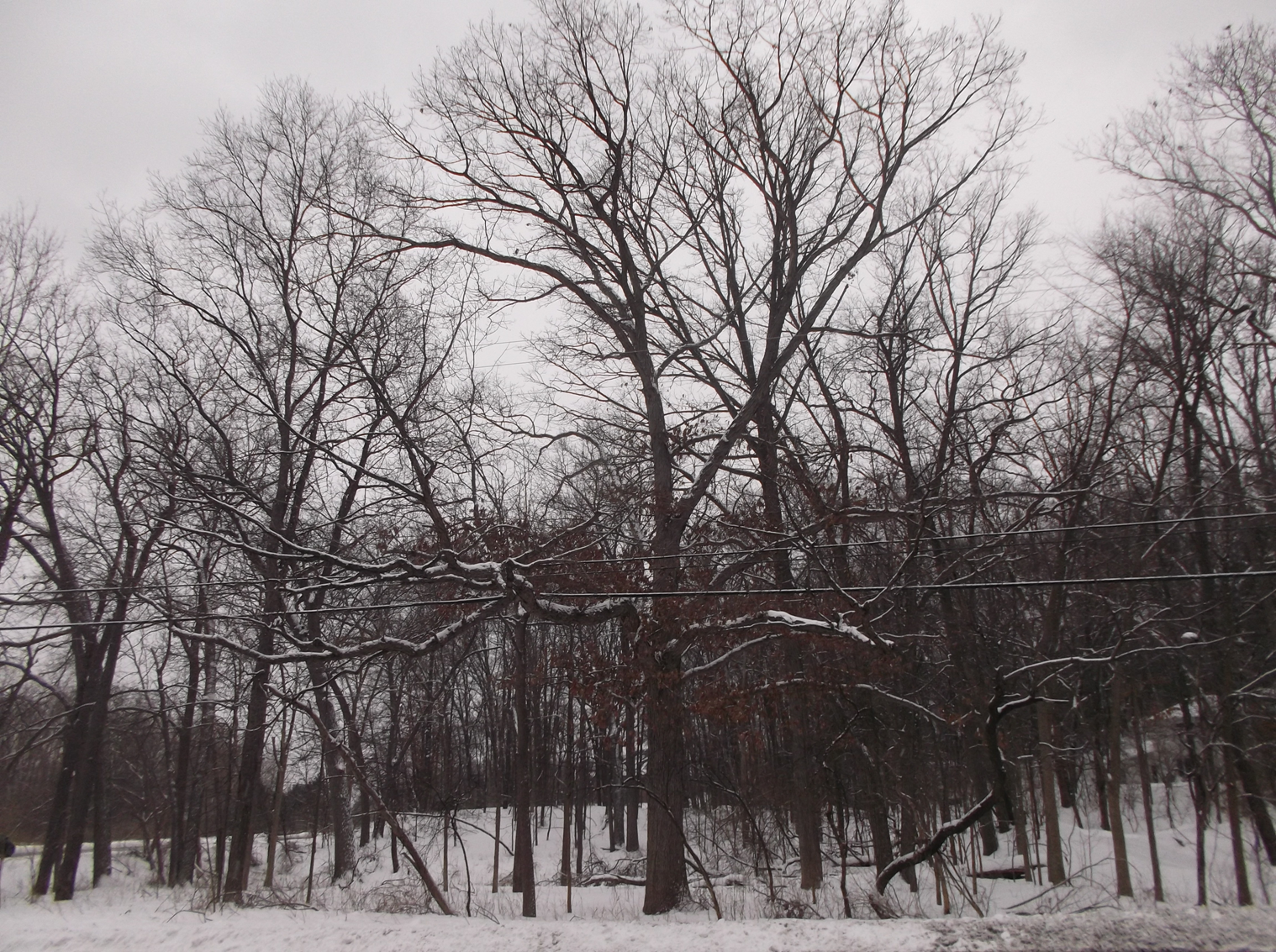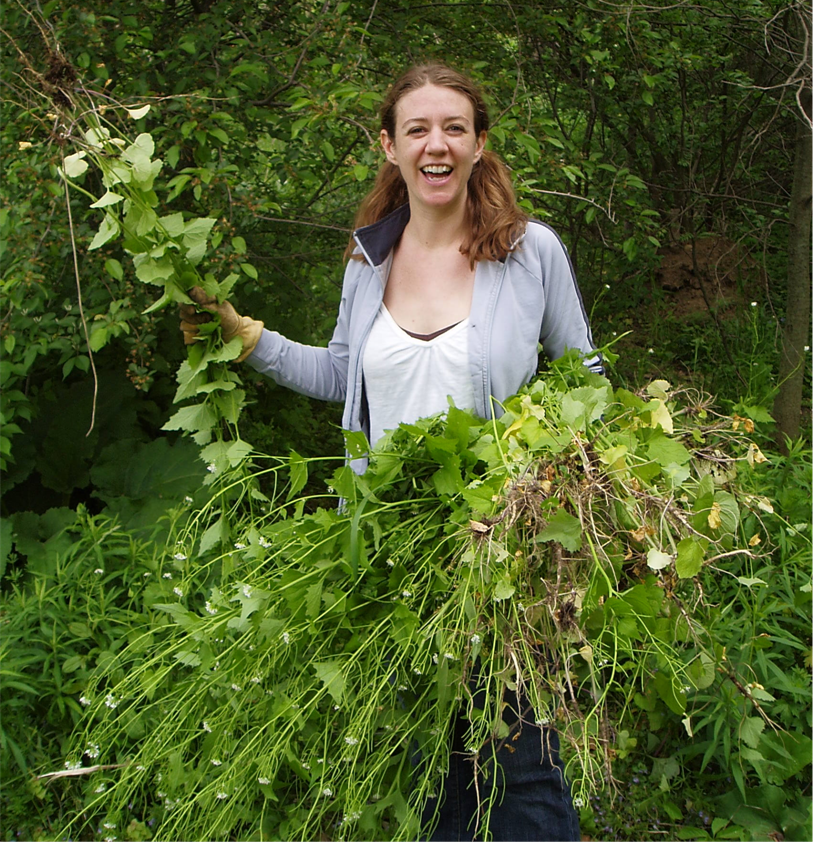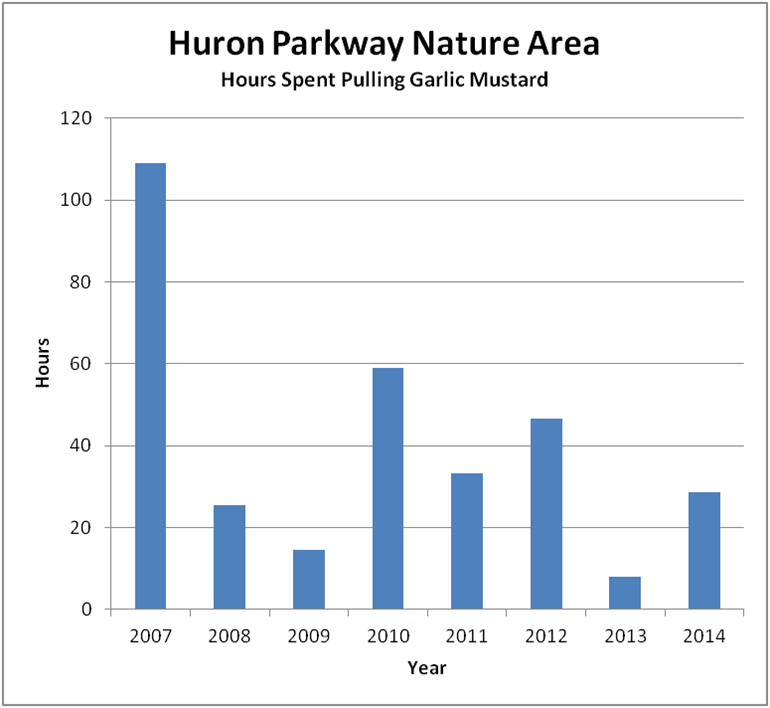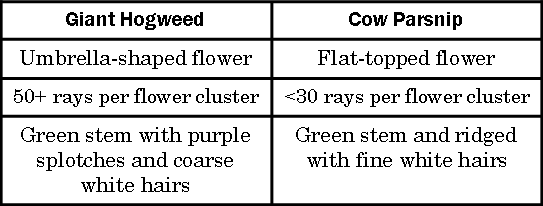Protecting and restoring Ann Arbor's natural areas and fostering an
environmental ethic among its citizens.
Since working with NAP, I have been fortunate to discover several new parks and natural areas around Ann Arbor that I previously did not know existed. My new discoveries included tiny play areas tucked inside friendly neighborhood communities, large woodlands that were only a few blocks away from my home, and even quaint natural areas nestled next to busy roads that I often drove past, but seemingly ignored. Oakridge Nature Area is one such place that I often saw out of my car window, but had never really seen.

Upon entering Oakridge, one might expect to find litter and thick brush lining the busy sidewalks. However as I made my way into this lonesome forest, I knew right away that there was much more than meets the eye. Divided by Huron Parkway, Oakridge Nature Area sits south of Glazier Way encompassing 8 acres of oak-hickory woods and wetland. Within these woods a portion of Miller Creek silently runs along a rare type of Michigan wetland called a fen. A fen is characterized by its water chemistry, namely it is pH neutral and contains a high amount of dissolved minerals relative to other wetland types. Typically dominated by grasses and sedges, the Oakridge fen is no exception to Ann Arbor's beautiful and diverse wetlands.
If you have ever explored Oakridge (and I encourage you to do so if you haven't), you may have noticed the large, invasive honeysuckle that has colonized the stream banks and consequently gave little thought to the wetland just a short distance away. Even if your eye tends to naturally find common invasive shrubs, I ask you to look at the big picture and observe all of the wonderful features Oakridge has to offer. Not only are the stream and the fen great places to observe wildlife, but Oakridge offers a wide array of 119 native plant species. Given its great diversity and somewhat secluded location, this natural area in the heart of Ann Arbor is an excellent excuse for getting outside, exploring the woods, and connecting with nature.
In order to combat the invasive species that threaten the diverse native plant life at Oakridge, Park Steward Leonore Gerstein has dedicated many hours to clearing the area of thick invasive shrubbery, and even hosting her own workdays with individuals from a nearby neighborhood. Gerstein has begun to transform this natural area not only by removing invasive plants, but by bringing neighborhood attention to the park and sharing with others the importance of protecting and restoring our limited natural areas. Focusing primarily on invasive species removal, Gerstein also would like Oakridge "to look cared for," and her hard work is truly telling of how much a difference one person can make in his/her community.

After just one visit to Oakridge, I was completely sold on its beauty and importance in our community. With an almost "untouched" appeal (there are no marked trails within Oakridge), it is as if I had been far removed from the bustling intersection with only a faint, muffled sound of nearby passing traffic. In my relatively short venture through this area, I found several animal tracks pressed into the dark soils, large vines winding all around making it difficult to find where they begin and end, and a subtle yet calming sound of water making its way along the creek. From this experience alone, I have decided not to be blinded by my everyday commute and errands to the diverse and special places that reside on the sides of roads, even within my own neighborhood. I encourage you to do the same: take time to seek out natural areas such as Oakridge that are surely waiting to be noticed for their diversity, ecological importance and unmistakable beauty.
Coordinator's Corner: Restoring Relationship to Land
Dave Borneman
Long-time readers will know that NAP's current mission statement was not our original one. We changed it after our first few years of existence and added the part about "fostering an environmental ethic." Basically we were acknowledging that it wasn't enough to just restore our natural areas. We also wanted to restore our relationship with those natural areas.
So, I was thrilled this past January to hear this same message shared by one of our keynote speakers at the Stewardship Network's annual conference on The Science, Practice, and Art of Restoring Native Ecosystems. The speaker was Robin Wall Kimmerer, a professor at State University of New York. She is also the Founding Director of the Center for Native Peoples and the Environment, and a member of the Citizen Band Potawatomi. Wearing all of those hats, she gave a great talk on finding common ground between traditional and scientific knowledge. For me, these were the most powerful words she shared, quoted directly from her PowerPoint presentation: It's not the land which is broken, but our relationship to land. To restore land we must also restore relationship to land.
I like the way she says that. It's not enough to focus on what is wrong with the land. We also need to consider what is wrong with how we treat land, and how we interact with it. Nature is full of complex inter-connecting relationships. It's a web of life. And we are part of that web. We are not only stewards of nature - we are also active members of it. So, the more that we wall ourselves off from Nature – the more that we isolate ourselves in air-conditioned buildings, seek nutrition from a can, and turn to video screens for entertainment and relaxation – the more our relationship with land suffers.
Fortunately, there are many easy ways to restore relationship to land, especially for Ann Arborites who have surrounded themselves with a fine network of parks and nature areas. None of us has to travel very far to be out in nature. Still not sure how to get started? Check out the calendar on pages 4-5 for a list of the many opportunities that NAP has to offer. Come learn how to identify frogs, toads, salamanders, birds, and turtles – and use that new knowledge to get you out into our parks as a NAP volunteer. Or join our controlled burn crew and help NAP return life-giving fire to our native ecosystems. Or be a photo-monitoring volunteer and see nature through a different lens than you ever have in the past. Or roll up your sleeves and grab a hold of some garlic mustard and help us remove this invader from our forests. There are many, many opportunities that NAP has to offer that will help restore your relationship to land. And not only will the land benefit – you will benefit also!
Winning the Garlic Mustard Battle
Becky Gajewski
Garlic mustard is a particularly aggressive and tricky invader. It grows in a wide variety of conditions – from wet to dry soils, and from sun to partial shade. It's especially fond of disturbed habitats, and it produces a chemical in its roots to keep other plants from growing. Knowing the nature of this invader can make eradicating it seem like a daunting task, and keeping a positive attitude is sometimes tough in the face of such an aggressive species. It can feel like an unwinnable fight, returning to the same place year after year to pull what seems like the same patch of plants over and over again.

But all that pulling really does make a difference! At NAP, we have been keeping track of our fieldwork in the parks since 1994. Looking at past records of the amount of time it took our field crew and volunteers to clear all the garlic mustard out of a given area each year, we find documentation that garlic mustard can be greatly controlled. As the garlic mustard population decreases from year to year, the time it takes to clear the area also decreases. Several of Ann Arbor's parks and natural areas have shrinking garlic mustard populations in their higher-quality sections. The graph below illustrates a good example at Huron Parkway Nature Area. There is a clear downward trend in the amount of time our field crew spent pulling garlic mustard in the park over the years. In less than a decade, our volunteer and crew's work effort has decreased from 109 hours in 2007 to 29 hours in 2014!

As one can see, the downward trend isn't a smooth one – some years required a little more effort than the year before. There are many factors that may cause this sort of fluctuation from year to year. If we have an early spring, for example, the garlic mustard may get an early start and cover more area than it would have otherwise. Or there may be a significant number of seeds lying dormant in the soil, just waiting for the right conditions to sprout (sometimes as much as 10 years after they were produced). And because garlic mustard is biennial, it is not uncommon to see its population rise and fall as plants that were tiny sprouts during the first year of their life bolt and flower the next year.
It's important not to give up if you see these temporary increases after years of effort. Our data shows that if you stay determined and keep chipping away little by little, you will be able to see a difference over time. If you're feeling discouraged, it can be helpful to talk to other folks who have had success in controlling garlic mustard. They may have suggestions for different methods you can try. More importantly, they can be a good source of moral support in what could seem like an uphill fight. And we at NAP are also here to say that you can do it! Keep pulling away, and eventually that patch of invasives will be a distant memory.
NAPpenings
Welcome new Parks Stewards:
Jason Tallant - Ruthven Nature Area
Jonathan Parker - Molin Nature Area
Brooks Curtis - Bird Hills Nature Area
Thank you!
Many thanks to the groups who volunteered with NAP recently. We could not make such a difference without you!
AmeriCorps
Dicken Elementary School
Emerson Middle School
EMU Delta Zeta
EMU Vision
Envirodems
Foundation for the International Relief of Children
Greenhills 8th Grade
Huron High School Key Club
Pioneer High School Interact Club
St. Mary's Student Parish
Team Red, White, and Blue
UM Alpha Phi Omega
UM Circle K
UM Econ 108
UM Environment 201
UM Lambda Theta Phi
UM Law School
UM School of Information
UM Sigma Gamma Rho
UM Triangle Fraternity
Youth Volunteer Corp
Giant Hogweed or Cow Parsnip?
Each year we receive reports of suspected infestations of giant hogweed in our parks. To date, we have investigated each and every report and they have all been cases of misidentified native cow parsnip. Here are a few tips to tell them apart:
For more identification tips, watch this video from the Invasive Species Council of Metro Vancouver http://tinyurl.com/HogweedVsParsnip. Please note, both Cow Parsnip and Giant Hogweed can cause burns, so it's best to avoid touching either of these giant Apiaceae.
Staff Updates
Farewell:
 Quentin Turner, Adopt-A-Park
Quentin Turner, Adopt-A-Park
My year working for NAP has been such a formative experience for my life. I have learned much about volunteerism, being a professional and the natural world. I will carry these lessons with me throughout all my future endeavors. I will miss so many things about being the Adopt-A-Park Coordinator but what I will miss the most are the passionate and knowledgeable volunteers of the Adopt-A-Park program. It has been great getting to know you all and I wish you the best headed into the spring. Thank you and farewell!
 Kristen Schotts, Field Crew
Kristen Schotts, Field Crew
I had a good time interning and working at NAP. It was nice to be surrounded by like-minded, nature-loving people. I'll miss the field crew, but I'm sure I'll be back from time to time to do my share of volunteering.
